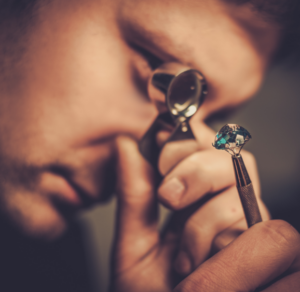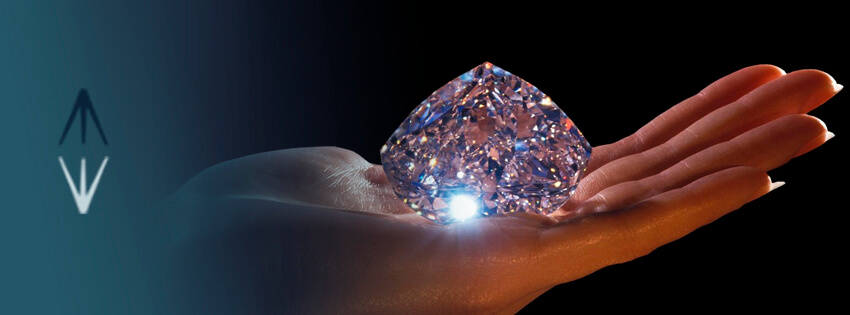The diamond industry is undergoing a period of transformation driven by technological advances, shifts in consumer preferences, and a growing focus on sustainability. This evolution raises questions about how balance will be maintained between natural and lab-grown diamonds, the impact of blockchain technology on supply chain transparency, and how demand in different markets will evolve. We’ll explore these aspects to provide a comprehensive view of what the future may hold.
1. Rise in Popularity of Synthetic Diamonds
Lab-grown diamonds have surged in popularity, and demand for them is expected to keep growing. These diamonds have drawn the attention of environmentally-conscious consumers by offering a more sustainable, often more affordable alternative. As production technology improves, the quality and value of lab-grown diamonds have started to seriously compete with natural ones. Currently, the synthetic diamond market represents a significant share, and it’s likely to continue expanding.

2. Blockchain and Transparency
One of the main challenges in the industry is supply chain transparency. Using blockchain and artificial intelligence will allow buyers to trace a diamond’s origin, from mining to final sale, enhancing consumer trust and satisfaction. This technology is especially relevant for buyers of ethical diamonds, who value assurance of responsible sourcing. Companies like De Beers are already implementing this technology to provide a full history of each diamond.
3. Shift in Consumer Preferences
Modern consumers, especially younger generations, increasingly seek sustainability and emotional value in their purchases. Preferences are leaning toward unique, personalized pieces. Companies are responding to this demand by offering custom jewelry options and utilizing digital platforms to connect better with these buyers. Additionally, interest in ethical diamonds has risen, as explained in our guide on ethical diamonds.
4. Decline in Natural Diamond Supply
Natural diamond reserves are decreasing as major mines near the end of their productive life. This has led to a rise in extraction costs and increased competitiveness for lab-grown diamonds. However, some key mine expansions, such as the Cut-9 project at Jwaneng, are expected to extend supply for a few more years. The decline in natural supply may drive up prices for natural diamonds, supporting their value in the market.
5. Innovation in Design and New Trends
As demand for personalized jewelry grows, innovative designs in diamonds are booming. Unconventional shapes and combinations of multiple stones are gaining popularity, offering consumers the option to create unique pieces that reflect their personality. The trend towards “understated luxury” is on the rise, valuing design and quality without excessive ostentation, in contrast to traditionally showier jewelry.
6. Impact of the Global Market
The diamond market will continue to be influenced by the global economy and demand fluctuations in key countries like the United States, China, and India. China has shown gradual recovery after the pandemic, while India has overtaken China as the second-largest market, potentially bringing new dynamics to the industry.
Frequently Asked Questions about the Future of the Diamond Industry
How will the popularity of synthetic diamonds affect the natural diamond market?
Lab-grown diamonds provide a more accessible and environmentally sustainable alternative, especially for consumers looking to reduce their carbon footprint or have limited budgets. Although lab-grown diamonds are expected to gain popularity, natural diamonds will continue to hold special value due to their rarity and associated prestige. Both types of diamonds will likely coexist but in increasingly differentiated markets.
What role will blockchain technology play in the diamond industry?
Blockchain will allow tracking of each diamond’s origin and custody chain, offering greater transparency in the buying process. This technology will be essential for consumers seeking to purchase ethical diamonds and avoid conflict diamonds. Over time, blockchain use is expected to become an industry standard, as it guarantees authenticity and responsibility.
Why are natural diamond reserves declining?
Major diamond mines, particularly in places like Botswana and Russia, are depleting their resources, reducing the supply of natural diamonds. While new mining projects exist, they involve high costs and are subject to rigorous environmental assessments. This increases the value and exclusivity of natural diamonds, driving an investment trend in these gems.
How will changing consumer preferences impact the diamond industry?
Younger generations increasingly value sustainability and emotional significance in their jewelry. They prefer unique, customizable pieces with minimal environmental impact. The industry is responding by diversifying offerings and adopting more responsible practices, from ethical sourcing to the use of lab-grown diamonds. These shifts in preferences are reshaping how diamonds are marketed and sold.
Conclusion as a Diamond Expert
As an expert in the diamond industry, it is fascinating to observe how this traditional market is rapidly adapting to modern times. The blend of technology, sustainability, and a more conscious consumer is redefining how we value and acquire these precious gems. The introduction of blockchain and the rise of lab-grown diamonds reflect an industry in transition, where authenticity and ethics play an increasingly prominent role.
Natural diamonds, however, will remain irreplaceable in terms of rarity and emotional significance. Not only do they represent a piece of the Earth’s history, but they also retain symbolic value that is difficult to replicate. As the industry continues to evolve, both natural and synthetic diamonds will have a place, catering to different audiences and allowing buyers to make informed, ethical decisions.
For those considering investing in or purchasing diamonds, my recommendation is to stay informed on innovations and trends. Choosing a diamond is now not only a matter of beauty and value but also of responsibility and transparency—factors that ensure the lasting brilliance of these gems for generations.




